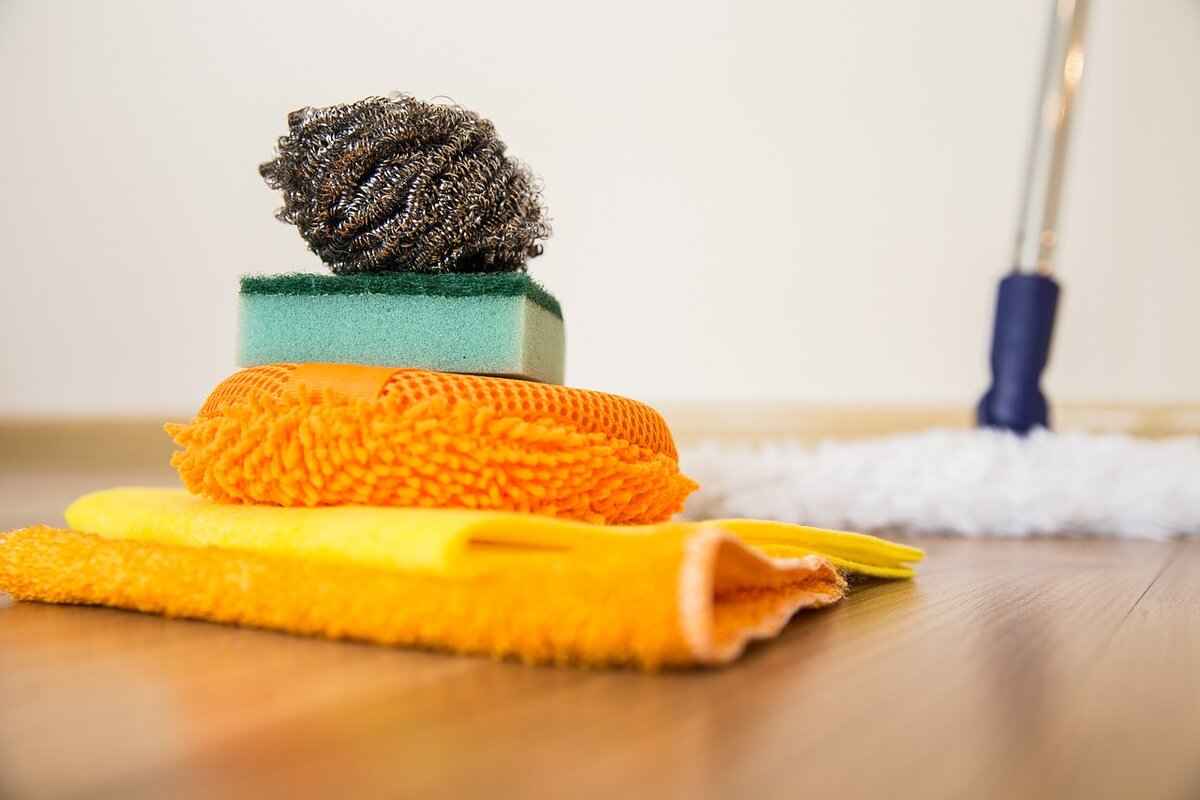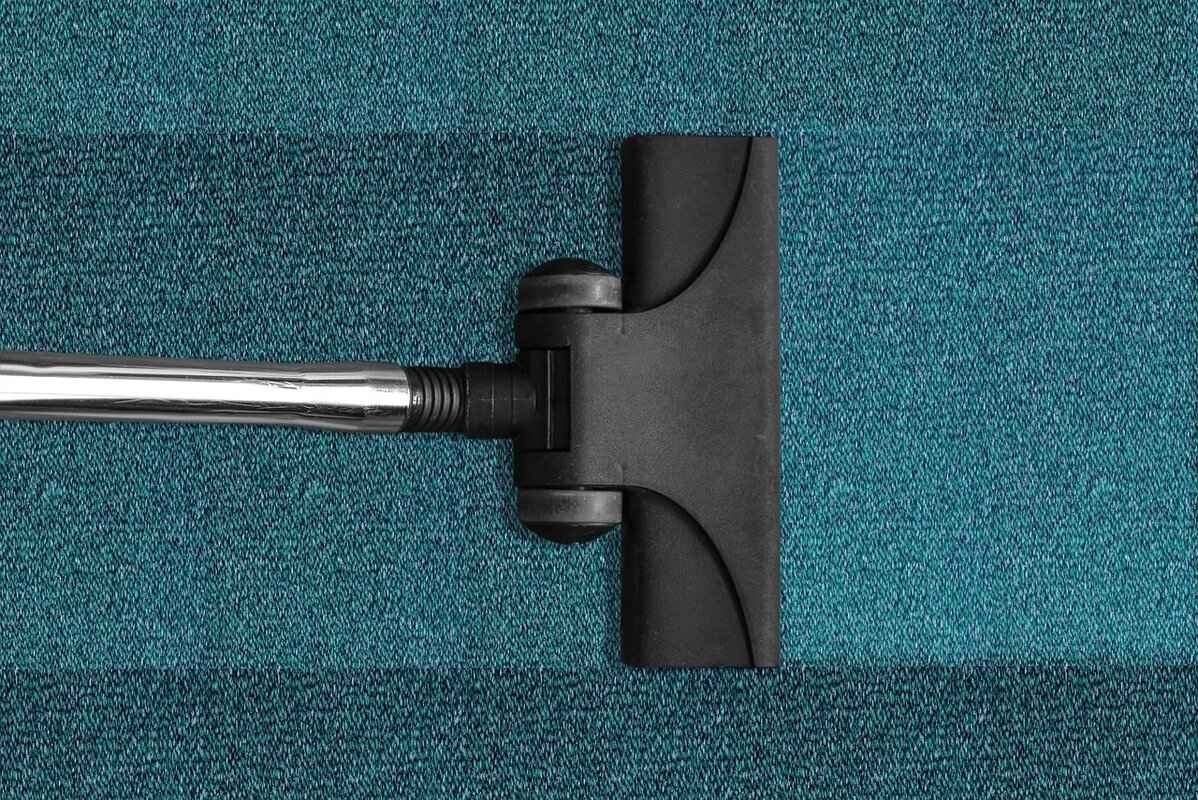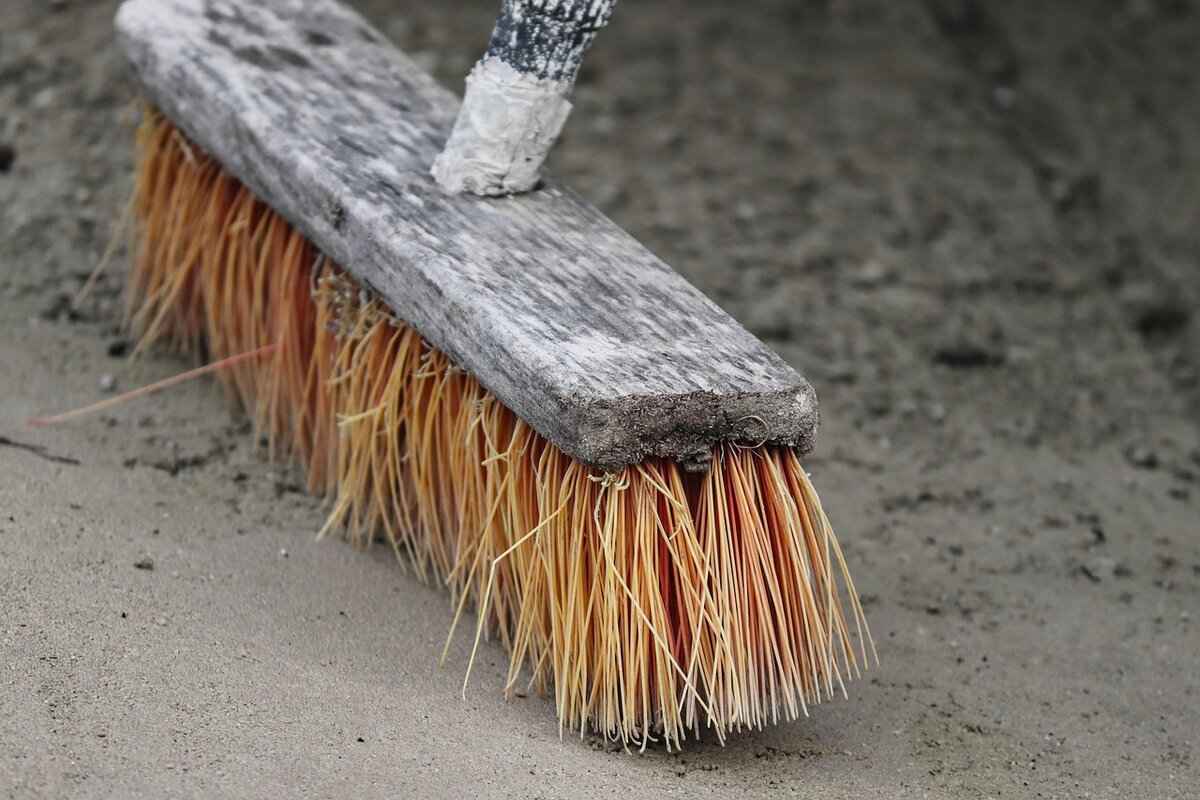This article provides a comprehensive guide on cleaning skulls for display, covering essential techniques, safety measures, and tips for preserving the integrity of the specimen. Cleaning a skull can be a delicate process that requires patience and attention to detail. Whether you are a collector, educator, or simply someone interested in natural history, understanding the proper methods of skull cleaning is vital for maintaining the specimen’s integrity.
Understanding the Ethics of Skull Collection
Before embarking on the cleaning process, it’s imperative to consider the ethical implications surrounding skull collection. Many individuals collect skulls from various sources, but it’s crucial to ensure that these specimens are obtained legally and ethically. This includes respecting wildlife laws and regulations, as well as understanding the significance of the species in its ecosystem. Responsible collectors should prioritize sourcing skulls from reputable suppliers or through legal means, such as from natural deaths or permitted hunting practices.
Gathering the Necessary Supplies
Preparing for skull cleaning involves gathering the right tools and materials. Essential supplies include:
- Protective gloves
- Face mask
- Plastic containers
- Scalpel or utility knife
- Dental picks
- Water
- Degreasing agents (like dish soap or commercial degreasers)
- Hydrogen peroxide for whitening
Having these items on hand will ensure a smoother cleaning process, allowing you to focus on the task at hand without interruptions.
Initial Cleaning: Removing Flesh and Tissue
The first step in cleaning a skull is effectively removing any remaining flesh and tissue. This can be accomplished through various methods, including:
- Maceration: Soaking the skull in water to allow bacteria to break down soft tissues.
- Boiling: Gently boiling the skull to loosen and remove tissues. Caution is necessary to avoid damaging the bone.
Both methods have their pros and cons. Maceration is often gentler on the bone, while boiling can be faster but may lead to potential damage if not monitored closely.
Degreasing the Skull: Why It Matters
Degreasing is a crucial step in the skull cleaning process, as it helps remove oils and fats that can cause discoloration and deterioration over time. This step is vital for preserving the skull’s appearance and longevity.
When selecting a degreasing agent, consider options like:
- Household dish soap
- Commercial degreasers
- Simple green or similar cleaning products
Each option has its benefits, and the choice may depend on the skull’s condition and your preferences.
Step-by-Step Degreasing Process
To effectively degrease a skull, follow these steps:
1. Prepare a solution of warm water and your chosen degreasing agent.2. Submerge the skull in the solution for several days, changing the water daily.3. After degreasing, rinse the skull thoroughly with clean water.4. Allow the skull to air dry completely before proceeding to the whitening process.
This method ensures that all oils are removed, providing a clean surface for the next steps.
Whitening the Skull: Best Practices
Once degreasing is complete, whitening the skull enhances its aesthetic appeal. The most common agent used for this purpose is hydrogen peroxide.
When applying whitening agents, remember to:
- Use a diluted solution to avoid damaging the bone.
- Apply the agent in a well-ventilated area and wear protective gear.
- Monitor the whitening process closely to achieve the desired brightness.
Preserving the Skull for Long-Term Display
After cleaning and whitening, proper preservation is essential for maintaining the skull’s integrity. Consider the following methods for display:
- Mounting on a plaque
- Using a glass display case
Regular maintenance is also crucial. Dust the skull periodically and ensure it is kept in a stable environment, away from direct sunlight and humidity.
Common Mistakes to Avoid When Cleaning Skulls
Cleaning skulls can be tricky, and mistakes can lead to irreversible damage. Some common pitfalls include:
- Using excessively high temperatures during boiling, which can warp the bone.
- Neglecting to degrease, leading to long-term deterioration.
By being aware of these issues, you can enhance your cleaning process and ensure a successful outcome.
Resources for Further Learning
For those looking to deepen their understanding of skull cleaning and display, consider exploring various resources. Books, online courses, and dedicated forums can provide valuable insights and community support.
Final Thoughts on Skull Cleaning
Cleaning a skull for display can be a rewarding endeavor that combines artistry with science. By following ethical practices and employing the right techniques, you can create a stunning display piece that honors the natural world.

Understanding the Ethics of Skull Collection
When it comes to skull collection, understanding the ethical considerations is essential for any enthusiast or researcher. This section delves into the legalities, respect for wildlife, and the importance of sourcing skulls responsibly, ensuring that your passion aligns with ethical practices.
Before embarking on your skull collection journey, it is vital to be aware of the legal regulations governing the collection and possession of animal remains. Laws vary significantly by region and species, and some animals are protected under local, state, or federal laws. For instance, collecting the skull of a protected species can lead to severe legal consequences, including fines and imprisonment. Always check with local wildlife authorities or conservation organizations to ensure that your collection practices comply with the law.
Ethical skull collection goes beyond mere legality; it also encompasses a deep respect for wildlife and their habitats. Collecting skulls should never involve harming living animals or disrupting ecosystems. Ethical collectors often focus on skulls found in nature, such as those discovered during hikes or in areas where natural mortality has occurred. This practice not only minimizes the impact on wildlife but also allows for a more sustainable approach to collection.
When sourcing skulls, consider the method of acquisition. Purchasing skulls from reputable dealers who adhere to ethical standards is crucial. Avoid buying from sources that cannot guarantee the legality or ethicality of their specimens. Additionally, participating in educational programs or workshops can provide valuable insights into ethical collection practices, helping you become a more responsible collector.
Education plays a pivotal role in promoting ethical skull collection. By understanding the ecological significance of animals and their remains, collectors can appreciate the value of each specimen beyond its aesthetic appeal. Engaging with local conservation groups or online forums can foster a community of informed collectors who share best practices and advocate for wildlife conservation.
In summary, ethical considerations in skull collection are multifaceted, encompassing legal, ecological, and social dimensions. By prioritizing responsible sourcing, respecting wildlife, and committing to ongoing education, collectors can enjoy their passion while contributing positively to the conservation of natural ecosystems.

Gathering the Necessary Supplies
When it comes to cleaning a skull for display, proper preparation is essential. The tools and materials you gather can significantly impact the efficiency and effectiveness of the cleaning process. Below, we outline the crucial supplies you will need to ensure a successful skull cleaning experience.
Having the right tools can make all the difference when cleaning a skull. Here are some of the most important tools you should consider:
- Scalpel or Surgical Knife: Ideal for precise cuts when removing flesh and tissue.
- Dental Picks: Useful for scraping hard-to-reach areas and removing stubborn bits of tissue.
- Forceps: Helpful for grasping and pulling away connective tissues.
- Gloves: Protect your hands and maintain hygiene during the cleaning process.
- Safety Goggles: Essential for eye protection, especially when using chemicals.
In addition to tools, you will need effective cleaning agents. Here are some recommended solutions:
- Hydrogen Peroxide: A common choice for whitening and disinfecting the skull.
- Dish Soap: Mild detergents can assist in the initial cleaning stages.
- Enzymatic Cleaners: Effective for breaking down organic material without damaging the bone.
- Degreasers: Necessary for removing fats and oils that can accumulate on the skull.
Safety should always be a priority. Make sure to have the following protective gear:
- Respirator Mask: Important if you are working with strong chemicals or potentially harmful materials.
- Lab Coat or Apron: Protects your clothing and skin from spills and splashes.
- Disposable Bags: For disposing of organic waste safely and hygienically.
Setting up a clean and organized work area is crucial for skull cleaning. Here are some tips for creating an efficient workspace:
- Choose a Well-Ventilated Area: Ensures any fumes from chemicals dissipate quickly.
- Use a Large, Clean Surface: A sturdy table or workbench gives you ample space to maneuver.
- Organize Your Supplies: Keep tools and cleaning agents within easy reach to streamline the process.
Before starting the cleaning process, take a moment to review your supplies and ensure you have everything you need. Double-check your tools, cleaning agents, and protective gear. This preparation will help you stay focused and efficient during the cleaning process.
By gathering the necessary supplies and preparing adequately, you set yourself up for a successful skull cleaning experience. Remember, attention to detail and safety are paramount, ensuring that the skull remains intact and visually appealing for display.

Initial Cleaning: Removing Flesh and Tissue
Cleaning a skull for display is a meticulous process that requires patience and the right techniques. One of the most critical stages in this process is the initial cleaning, which focuses on removing flesh and tissue. This step sets the foundation for effective skull preservation and display. Below, we will explore the various methods, tools, and techniques for effective initial cleaning.
The first step in cleaning a skull involves removing any remaining flesh and tissue. This is crucial for ensuring that the skull is properly prepared for subsequent cleaning stages. There are several methods that can be employed, and the choice of technique may depend on the condition of the skull and the amount of tissue present.
- Maceration: This method involves soaking the skull in water for an extended period, allowing bacteria to break down the flesh naturally. It is vital to change the water regularly to prevent odor and bacterial growth.
- Boiling: Boiling the skull can effectively remove soft tissue. However, care must be taken not to damage the bone. It is recommended to use a pot that can accommodate the skull without overcrowding.
- Manual Removal: Using tools such as scalpels, tweezers, and dental picks can help in the manual removal of flesh. This method is labor-intensive but allows for greater control and precision.
Having the right tools is essential for successful flesh removal. Here are some commonly used instruments:
| Tool | Description |
|---|---|
| Scalpel | A sharp blade that allows for precise cuts to remove tissue. |
| Dental Pick | Useful for scraping away stubborn bits of flesh from crevices. |
| Forceps | Ideal for gripping and pulling away flesh. |
| Gloves | Essential for hygiene and protection during the cleaning process. |
While cleaning a skull, it is crucial to prioritize safety. Always wear gloves to prevent contamination and protect your hands from sharp tools. Additionally, work in a well-ventilated area, especially if using boiling water or chemicals. If maceration is chosen, ensure that the water is changed regularly to minimize foul odors and bacterial growth.
- Be Patient: Rushing the process can lead to incomplete cleaning or damage to the skull.
- Document the Process: Take notes or photos of the skull before and after each cleaning stage for reference.
- Use Proper Disposal Methods: Dispose of any biological waste according to local regulations to ensure environmental safety.
By following these methods and utilizing the right tools, you can effectively remove flesh and tissue from a skull, setting the stage for further cleaning and preparation. This meticulous approach not only preserves the integrity of the specimen but also enhances its aesthetic appeal for display.
Tools for Flesh Removal
Cleaning a skull for display involves several critical steps, and one of the most important is the removal of flesh and tissue. This process can be facilitated by a variety of specialized tools, each designed for specific tasks. Below, we explore the most effective instruments for flesh removal, ensuring that you have the right equipment for the job.
- Scalpels: A scalpel is an essential tool for precise cutting. Its sharp blade allows for clean incisions, making it easier to separate flesh from bone without causing damage. Choose scalpels with different blade sizes to tackle various areas of the skull.
- Dental Picks: These tools are particularly useful for reaching into small crevices and removing flesh that may be stuck in hard-to-reach areas. Their pointed ends can help lift and scrape away tissue effectively.
- Forceps: Forceps are invaluable for gripping and pulling tissue away from the skull. They come in various shapes, including straight and curved, allowing for better access to intricate areas.
- Bone Saws: In some cases, particularly with larger skulls, a bone saw may be necessary. These saws can help remove larger sections of flesh and even bone if required, though caution is advised to avoid damaging the skull.
- Utility Knives: A utility knife can also be handy for larger pieces of flesh. Its retractable blade can handle tougher materials and is great for initial cuts before switching to more precise tools.
- Soft Brushes: Once the bulk of the flesh is removed, a soft brush can help clean off any remaining bits of tissue without scratching the bone. This is especially useful for delicate areas.
- Water Spray Bottle: Keeping the skull moist during the cleaning process can help soften the tissue, making it easier to remove. A spray bottle allows for controlled application of water.
When selecting tools for flesh removal, it’s important to consider the size and type of skull you are working with. For example, smaller skulls may require finer instruments, while larger skulls might need sturdier tools. Always prioritize safety by wearing gloves and protective eyewear, as the process can involve sharp instruments and potentially hazardous materials.
In addition to these tools, having a well-lit workspace will enhance your precision and control. Organizing your tools in a way that allows easy access can also streamline the cleaning process, making it more efficient.
Ultimately, the choice of tools will significantly impact the effectiveness of your flesh removal process, contributing to the overall success of your skull cleaning project. By equipping yourself with the right instruments and understanding their uses, you can achieve a clean and well-preserved skull ready for display.
Techniques for Effective Flesh Removal
Cleaning skulls for display requires a thorough understanding of various techniques to effectively remove flesh and tissue. Each method has its own set of advantages and disadvantages, making it essential to choose the right approach based on the specific needs of the specimen. In this section, we will explore two popular techniques: maceration and boiling, analyzing their pros and cons to help you make an informed decision.
Maceration is a method that utilizes moisture to break down soft tissues over time. This technique involves submerging the skull in water, allowing natural bacteria and enzymes to digest the remaining flesh.
- Pros:
- Less Risk of Damage: Since maceration is a slow process, it minimizes the risk of damaging delicate bones.
- Environmentally Friendly: This method relies on natural processes, making it a more sustainable option.
- Effective for Complex Structures: Maceration can penetrate hard-to-reach areas and intricate structures within the skull.
- Cons:
- Time-Consuming: This method can take several weeks to months, depending on the amount of tissue present.
- Odor Issues: The process can produce unpleasant odors, which may require proper ventilation.
- Requires Monitoring: Regular checks are necessary to ensure the process is proceeding without complications.
Boiling is a more immediate method for flesh removal, where the skull is submerged in boiling water. This technique effectively loosens tissues, making them easier to scrape away.
- Pros:
- Speed: Boiling can significantly reduce cleaning time, often completing the process in just a few hours.
- Immediate Results: This method allows for quick inspection and further cleaning as needed.
- Effective for Large Specimens: Boiling is particularly useful for larger skulls with substantial tissue.
- Cons:
- Risk of Damage: The high temperatures can weaken or damage fragile bones, especially in older specimens.
- Loss of Detail: Boiling may remove essential details from the skull, which could be important for display purposes.
- Requires Caution: Handling boiling water presents safety risks, necessitating protective gear.
In summary, both maceration and boiling have their unique benefits and drawbacks. Maceration is a gentle, environmentally friendly option that takes time but ensures the integrity of the specimen. On the other hand, boiling offers a quick solution but comes with the risk of damaging delicate structures. Understanding these techniques will help you choose the best method for effectively removing flesh from skulls for display.

Degreasing the Skull: Why It Matters
Degreasing a skull is an essential process that significantly impacts the overall quality and longevity of the specimen. Without proper degreasing, the skull may retain oils and fats that can lead to deterioration over time. This section delves into the importance of degreasing, the science behind it, and the best practices to ensure optimal results.
Understanding the Importance of Degreasing
When a skull is cleaned, remnants of organic materials, such as fats and oils, can linger within the bone structure. These substances can attract pests, promote bacterial growth, and lead to unpleasant odors. Degreasing effectively removes these residues, ensuring that the skull remains in a stable condition for display and preservation.
How Degreasing Contributes to Skull Preservation
- Reduces Odor: Odors from decomposing organic material can be off-putting. Degreasing helps eliminate these smells.
- Prevents Pest Infestation: Oils can attract insects and rodents, which may damage the skull. A thorough degreasing minimizes this risk.
- Enhances Aesthetic Appeal: A clean, degreased skull looks more appealing, showcasing the intricate details of the bone structure.
- Ensures Longevity: By removing harmful substances, degreasing helps prevent future damage, ensuring the skull can be appreciated for years to come.
What Happens During the Degreasing Process?
Degreasing typically involves soaking the skull in a suitable degreasing agent, which penetrates the bone and dissolves fats and oils. The process may take several days to weeks, depending on the skull’s condition and the strength of the degreasing solution used. Regularly changing the degreasing solution can enhance effectiveness, as it prevents the saturation of the agent.
Choosing the Right Degreasing Agent
Various degreasers can be employed, ranging from household items like dawn dish soap to more potent commercial solutions. The choice of degreaser will depend on the skull’s condition and the desired results. It is crucial to select a product that is effective yet gentle enough to avoid damaging the bone structure.
Common Degreasing Techniques
- Cold Soaking: This method involves soaking the skull in a degreaser at room temperature. It is a slower process but can be gentler on the bone.
- Warm Soaking: Using warm water can speed up the degreasing process, as heat helps to dissolve fats more effectively.
- Ultrasonic Cleaning: This advanced technique uses high-frequency sound waves to agitate the degreasing solution, enhancing its ability to penetrate and clean.
In conclusion, the degreasing process is not just a step in skull cleaning; it is a vital component that ensures the preservation and aesthetic appeal of the specimen. By understanding its significance and employing the right techniques, collectors can maintain the integrity of their skulls for years to come.
Choosing the Right Degreasing Agent
When it comes to cleaning skulls for display, selecting the right degreasing agent is crucial for achieving optimal results. The choice of degreaser can significantly influence the efficiency of the cleaning process and the final appearance of the skull. In this section, we will explore various degreasers, including both household products and commercial solutions, to help you make an informed decision.
Degreasing is essential because it removes fats and oils that can cause discoloration and deterioration over time. Without proper degreasing, the skull may retain unsightly residues that can attract pests or lead to unpleasant odors. Therefore, choosing an effective degreasing agent is a vital step in the skull cleaning process.
Many household products can serve as effective degreasers. Here are some popular options:
- Dawn Dish Soap: This is a well-known degreaser that effectively breaks down oils and fats. It is gentle enough to use on delicate bones while still being powerful against grime.
- Baking Soda: This natural abrasive can help lift grease when mixed with water to form a paste. It’s particularly useful for stubborn spots.
- Vinegar: A natural acid, vinegar can help dissolve grease and is also effective in eliminating odors. However, it should be used cautiously as it can also affect the bone material.
If you’re looking for more potent options, commercial degreasers are specifically formulated for tough cleaning jobs. Here are a few worth considering:
- Simple Green: This biodegradable cleaner is effective for a variety of surfaces, including bones. It is safe and non-toxic, making it a popular choice among skull cleaning enthusiasts.
- Acetone: While more aggressive, acetone can be highly effective in removing stubborn grease. Caution is advised, as it can also damage the bone if left on too long.
- Commercial Bone Degreasers: There are specialized products available that are designed for cleaning bones and skulls. These often contain enzymes that break down fats without harming the bone.
When selecting a degreasing agent, consider the following factors:
- Effectiveness: Ensure the chosen product is capable of breaking down the specific types of grease present on the skull.
- Safety: Opt for non-toxic and environmentally friendly options whenever possible, especially if you are concerned about the impact on the bone material.
- Ease of Use: Choose a degreaser that fits your cleaning method and is easy to apply without excessive handling of the skull.
In conclusion, selecting the right degreasing agent is a pivotal step in the skull cleaning process. By understanding the available options and considering factors such as effectiveness, safety, and ease of use, you can enhance your cleaning efforts and ensure the preservation of your specimen. Whether you opt for household products or specialized commercial solutions, the right choice will contribute to a successful and rewarding skull cleaning experience.
Step-by-Step Degreasing Process
The degreasing process is a vital stage in preparing a skull for display, ensuring that all fats and oils are removed from the bone structure. This step not only enhances the aesthetic appearance of the skull but also prevents any potential degradation over time. Below is a comprehensive, step-by-step guide to effectively degrease a skull, ensuring optimal results.
- Step 1: Prepare Your Work Area
- Step 2: Choose Your Degreasing Agent
- Dawn Dish Soap: A popular choice for its effectiveness and accessibility.
- Simple Green: An environmentally friendly cleaner that works well on organic materials.
- Commercial Degreasers: Products specifically designed for degreasing bones, often more potent than household options.
- Step 3: Soaking the Skull
- Step 4: Agitation and Scrubbing
- Step 5: Rinse Thoroughly
- Step 6: Drying the Skull
Before beginning the degreasing process, it is essential to set up a clean and well-ventilated workspace. Ensure that you have all necessary supplies within reach, including your chosen degreasing agent, gloves, and containers. A dedicated area minimizes contamination and makes the process smoother.
Selecting the right degreasing agent is crucial. Common options include:
Once you have your degreasing agent, fill a container with warm water and add the degreaser according to the manufacturer’s instructions. Submerge the skull completely and allow it to soak for a minimum of 24 hours. For heavily soiled specimens, longer soaking times may be necessary.
After soaking, gently agitate the water to help loosen any remaining grease. Using a soft brush, such as a toothbrush, carefully scrub the skull, paying special attention to crevices and joints where grease tends to accumulate. Avoid using excessive force to prevent damaging the bone.
Once you are satisfied with the scrubbing, rinse the skull under warm running water. This step is vital to remove any residual degreasing agent, which could cause future discoloration or damage. Ensure that all areas are rinsed, particularly the interior of the skull.
After rinsing, pat the skull dry with a clean towel. Place it in a well-ventilated area to air dry completely. Avoid direct sunlight, as this can cause cracking or warping of the bone structure. Ensure that the skull is completely dry before proceeding to the whitening stage.
By following these steps carefully, you will achieve a thoroughly degreased skull that is ready for the next phase of cleaning and preservation. Remember, patience and attention to detail are key to ensuring the best results in your skull cleaning project.

Whitening the Skull: Best Practices
After successfully degreasing a skull, the next step in the cleaning process is whitening. This crucial step not only enhances the skull’s appearance but also helps to preserve its integrity for display. In this section, we will explore the most effective whitening techniques, focusing on the use of hydrogen peroxide and other whitening agents.
Whitening serves multiple purposes in skull cleaning. Primarily, it removes any residual stains and discoloration that may have occurred during the cleaning process. A well-whitened skull is not only visually appealing but also showcases the intricate details of the bone structure. Moreover, whitening can help to inhibit any potential bacterial growth that may arise from remaining organic material.
When it comes to whitening, there are several techniques you can employ. The most popular method involves the use of hydrogen peroxide, which is not only effective but also readily available in various concentrations.
- Hydrogen Peroxide Application: For best results, use a concentration of 3% hydrogen peroxide. Submerge the skull in a solution or apply it directly to the surface using a brush. Ensure that the skull is evenly coated and leave it to sit for at least 24 hours.
- Using Other Whitening Agents: Alternatives such as bleach can be effective but should be used with caution. A diluted bleach solution can be applied; however, it may weaken the bone structure if overused.
- Natural Alternatives: For those preferring non-chemical options, consider using a paste made from baking soda and water. This gentle abrasive can help lift stains without damaging the skull.
While hydrogen peroxide is widely regarded as one of the best whitening agents, it is essential to compare it with other options. Hydrogen peroxide is less likely to cause damage to the skull compared to harsher chemicals like bleach. Additionally, it is safer for the user and the environment. However, it may take longer to achieve the desired whiteness.
On the other hand, while bleach can provide quick results, it poses risks such as bone brittleness and potential toxicity. Therefore, the choice of whitening agent should depend on the skull’s condition and the desired outcome.
Safety is paramount when working with any chemical agents. Always wear protective gloves and eyewear to prevent any contact with skin or eyes. Ensure that your workspace is well-ventilated, especially when using hydrogen peroxide or bleach.
Before applying any whitening agent, test a small, inconspicuous area of the skull to observe any adverse reactions. This precaution can save you from potential damage and ensure that the whitening process is effective.
After the whitening process, it is crucial to rinse the skull thoroughly to remove any residual chemicals. Allow the skull to dry completely in a shaded area, as direct sunlight can cause fading and damage. Once dry, consider applying a protective spray designed for bone preservation to maintain the skull’s appearance over time.
In summary, whitening a skull is an essential step in the cleaning process that enhances its aesthetic appeal while preserving its integrity. By following the best practices outlined above, you can achieve a beautifully whitened skull ready for display.
Hydrogen Peroxide vs. Other Whitening Agents
When it comes to whitening skulls for display, hydrogen peroxide is often the go-to choice due to its effectiveness and accessibility. However, it’s essential to compare it with other whitening agents to determine the best option for your specific needs. This section will explore various alternatives, their effectiveness, safety, and overall suitability for skull whitening.
- Hydrogen Peroxide: A common choice in skull whitening, hydrogen peroxide is a powerful oxidizing agent that effectively removes stains and discoloration. Typically available in concentrations ranging from 3% to 30%, it is crucial to choose the right concentration for your skull type. Higher concentrations yield faster results but can also pose risks to the skull’s integrity if not used correctly.
- Bleach: While bleach is a potent whitening agent, it is not recommended for skull cleaning. Its harsh chemicals can damage bone structure and lead to brittleness over time. Additionally, bleach can leave harmful residues that may not be safe for display.
- Oxygen Bleach: This is a gentler alternative to traditional bleach. Oxygen bleach, which contains sodium percarbonate, releases hydrogen peroxide when dissolved in water. It is safer for bone and less likely to cause damage, making it a viable option for those concerned about the integrity of their specimen.
- Whitening Toothpaste: Surprisingly, whitening toothpaste can be used for minor touch-ups on skulls. It contains mild abrasives and whitening agents that can help remove surface stains. However, it is not suitable for extensive whitening and should be used sparingly.
- Commercial Whitening Products: There are specialized commercial products designed for bone cleaning and whitening. These often contain a blend of safe whitening agents and are formulated to be effective without compromising the material. Always read reviews and guidelines to ensure you select a reputable product.
Effectiveness and Safety Considerations
When deciding on a whitening agent, effectiveness must be balanced with safety. Hydrogen peroxide is generally safe when used correctly, but precautions should be taken to avoid skin contact and inhalation of fumes. Always work in a well-ventilated area and consider wearing gloves and a mask.
In contrast, alternatives like bleach may provide quick results but pose significant risks to both the skull and the person handling it. Oxygen bleach and commercial products may require more time to achieve desired results but are safer and less likely to damage the specimen.
Conclusion
Ultimately, the choice of whitening agent depends on your specific needs and comfort level with the materials. Hydrogen peroxide remains a popular choice due to its effectiveness, but alternatives like oxygen bleach or specialized commercial products may offer safer options. Always prioritize safety and the preservation of the skull’s integrity when selecting a whitening agent.
Applying Whitening Agents Safely
When it comes to skull cleaning, particularly the whitening process, safety is of utmost importance. Whitening agents, while effective in enhancing the appearance of skulls, can pose risks if not handled properly. This section provides essential guidelines to ensure safe application of these chemicals while achieving the desired results.
- Understand the Chemicals Involved: Before using any whitening agent, familiarize yourself with its composition. Common agents like hydrogen peroxide, sodium percarbonate, and commercial whitening products can have varying levels of toxicity and effectiveness.
- Always Wear Protective Gear: Safety goggles, gloves, and masks should be standard attire when handling whitening agents. This protects your skin, eyes, and respiratory system from potential irritation or harm.
- Work in a Well-Ventilated Area: Ensure that your workspace is well-ventilated to avoid inhaling fumes. If possible, work outdoors or in a space with good air circulation.
- Follow Manufacturer Instructions: Always adhere to the guidelines provided by the manufacturer. This includes recommended concentrations, application methods, and safety precautions.
- Test on Small Areas First: Before applying a whitening agent to the entire skull, conduct a patch test on a small, inconspicuous area. This helps assess the agent’s effect on the material without risking the entire specimen.
- Monitor the Whitening Process: Keep a close eye on the skull during the whitening process. Prolonged exposure to whitening agents can lead to damage, so it’s crucial to check regularly and rinse off the agent as soon as the desired whiteness is achieved.
- Dispose of Chemicals Properly: After completing the whitening process, dispose of any leftover chemicals according to local regulations. Never pour them down the drain unless specifically instructed, as they may harm the environment.
Additional Safety Tips:
- Always have a first-aid kit handy in case of accidental exposure.- If you experience any adverse reactions, seek medical attention immediately.- Keep all chemicals out of reach of children and pets.
By following these guidelines, you can safely apply whitening agents to skulls, ensuring both effective results and personal safety. Remember, preparation and caution are key to a successful whitening process.

Preserving the Skull for Long-Term Display
Preserving a skull for long-term display is a critical step in ensuring that your specimen maintains its integrity and aesthetic appeal over time. Proper preservation techniques not only enhance the skull’s appearance but also protect it from environmental factors that could lead to deterioration. This section outlines essential methods and tips for preserving your skull effectively.
Preservation is vital because skulls, like any organic material, are susceptible to damage from various elements such as humidity, temperature fluctuations, and pests. Without proper care, a beautifully cleaned skull can quickly degrade, losing its detail and charm. Understanding the importance of preservation allows collectors and enthusiasts to appreciate the value of their specimens and the effort required to maintain them.
The environment in which you display your skull plays a significant role in its preservation. Here are some key factors to consider:
- Temperature: Keep the display area at a consistent temperature, ideally between 60°F and 75°F (15°C to 24°C). Avoid direct sunlight, which can cause fading and brittleness.
- Humidity: Maintain humidity levels between 40% and 60%. High humidity can lead to mold growth, while low humidity can cause cracking.
- Lighting: Use UV-filtering glass if you are displaying the skull in a case. This will help protect it from harmful UV rays that can degrade the material over time.
To ensure your skull remains in excellent condition, regular maintenance is essential. Here are some practical tips:
- Dusting: Use a soft brush or microfiber cloth to gently dust the skull regularly. Avoid using harsh chemicals or cleaners that could damage the surface.
- Inspecting for Damage: Regularly check for signs of wear, such as cracks or discoloration. Early detection allows for timely repairs.
- Cleaning: If the skull requires cleaning, use a mild soap solution and a soft cloth. Avoid soaking the skull, as this can lead to water damage.
The method you choose to display your skull can significantly impact its preservation. Here are some popular options:
- Wall Mounts: Wall mounts are a great way to showcase skulls while keeping them secure. Ensure they are made of non-corrosive materials.
- Glass Cases: Displaying the skull in a glass case protects it from dust and physical contact, while allowing for an unobstructed view.
- Pedestals: For a more artistic presentation, consider using pedestals or stands that complement the skull’s features.
There are various conservation products available that can enhance the preservation of your skull. These include:
- Silica Gel Packs: These can help control humidity levels in the display case.
- Anti-fungal Sprays: Applying a light coat of anti-fungal spray can help prevent mold growth without damaging the skull.
- Preservation Wax: Some collectors use preservation wax to add a protective layer, enhancing the shine and providing a barrier against dirt.
In summary, preserving a skull for long-term display involves understanding the importance of environmental factors, implementing regular maintenance, choosing appropriate display methods, and utilizing conservation products. By following these guidelines, you can ensure that your skull remains a striking and well-preserved specimen for years to come.
Choosing the Right Display Method
When it comes to displaying a skull, can significantly enhance its aesthetic appeal and ensure that it is showcased in the best possible light. Various display options exist, each with its own set of advantages and considerations. This section will explore several popular methods for displaying skulls, including mounting techniques, glass cases, and creative alternatives.
- Wall Mounting: One of the most common methods for displaying skulls is wall mounting. This technique allows the skull to be a focal point in a room, drawing attention and admiration. When mounting a skull on the wall, it’s essential to use appropriate hardware to ensure stability. Consider using a shadow box or a dedicated skull mount to create a visually appealing presentation.
- Glass Cases: For those who prefer a more protected display, glass cases are an excellent option. They not only safeguard the skull from dust and damage but also allow for a 360-degree view. When selecting a glass case, consider the size and design to ensure it complements the skull while providing adequate visibility. Additionally, UV-protective glass can help prevent fading and deterioration over time.
- Table Displays: Displaying a skull on a table or pedestal can create an engaging centerpiece. This method allows for easy access and interaction, making it ideal for educational settings or exhibitions. To enhance the display, consider incorporating elements like lighting or decorative stands that highlight the skull’s unique features.
- Creative Alternatives: Beyond traditional methods, there are numerous creative ways to showcase a skull. For instance, incorporating it into a themed display with natural elements like plants or stones can create a striking visual narrative. Additionally, using unique materials such as reclaimed wood or metal for the base can add an artistic touch.
Regardless of the display method chosen, it is crucial to consider the environment where the skull will be placed. Factors such as lighting, humidity, and temperature can affect the integrity of the specimen over time. Ensuring that the display area is stable and free from direct sunlight will help maintain the skull’s condition.
In conclusion, selecting the right display method for a skull not only enhances its visual appeal but also contributes to its preservation. By considering various options such as wall mounting, glass cases, and creative displays, collectors can find the perfect way to showcase their specimens while ensuring they remain in excellent condition for years to come.
Regular Maintenance Tips
Maintaining a skull display is crucial for preserving its beauty and integrity over time. Regular care not only enhances the visual appeal of the skull but also ensures that it remains in excellent condition for years to come. Below are some essential maintenance tips to help you care for your displayed skull.
- Dusting: Regularly dust your skull using a soft, dry cloth or a feather duster. This prevents the accumulation of dust, which can dull the surface and detract from its appearance. Avoid using abrasive materials that could scratch the surface.
- Cleaning: For deeper cleaning, use a gentle solution of water and mild soap. Moisten a cloth with the solution and wipe the skull carefully. Be cautious around crevices and delicate areas to avoid damage. Rinse with a clean, damp cloth to remove any soap residue.
- Environmental Considerations: Position your skull display away from direct sunlight, as UV rays can cause fading and deterioration. Additionally, avoid placing it in areas with high humidity, which can promote mold growth. A stable environment will prolong the lifespan of the skull.
- Inspection: Regularly inspect the skull for any signs of damage or wear. Look for cracks, discoloration, or signs of pests. Early detection of issues can prevent more severe damage and ensure timely repairs.
- Handling: When moving or adjusting your skull, handle it with care. Always support it from the base and avoid putting pressure on delicate areas. This will help prevent unintentional damage during routine adjustments.
- Using Protective Coatings: Consider applying a protective coating or sealant designed for bone or taxidermy items. This can help shield the skull from dust, moisture, and environmental factors. Always follow the manufacturer’s instructions when applying any coatings.
- Storage: If you need to store the skull for any reason, wrap it in acid-free tissue paper and place it in a cool, dry location. Avoid stacking other items on top of it to prevent crushing or bending.
Incorporating these regular maintenance tips into your routine will significantly contribute to the longevity and aesthetic appeal of your displayed skull. By taking the time to care for your specimen, you ensure that it remains a captivating centerpiece in your collection for many years to come.

Common Mistakes to Avoid When Cleaning Skulls
Cleaning skulls can be an intricate process, and while it can yield stunning results, it is also fraught with potential pitfalls. Understanding these common mistakes is essential for anyone looking to clean skulls effectively and safely. This section outlines the most frequent errors and provides guidance on how to avoid them, ensuring a successful skull cleaning experience.
One of the most critical mistakes is neglecting safety measures. Many cleaning agents used during the skull cleaning process can be hazardous. Always wear protective gear, including gloves and goggles, to safeguard against chemical exposure. Additionally, ensure that you are working in a well-ventilated area to avoid inhaling fumes.
Different skulls require different cleaning techniques. For instance, using boiling water on delicate skulls can lead to cracking or warping. Maceration, which involves soaking the skull in water to decompose tissues naturally, is often safer for fragile specimens. Always research the best method for the specific type of skull you are cleaning.
Failing to thoroughly remove all flesh and tissue can result in lingering odors and degradation over time. It is vital to ensure that you have removed all organic material before proceeding to the next steps. Tools such as scalpels, forceps, and dental picks can assist in this process. Take your time to ensure a clean specimen.
Many beginners underestimate the importance of degreasing. Residual fats can cause discoloration and attract pests. Always use a degreasing agent, such as ammonia or dish soap, and allow sufficient time for the process to work. Skipping this step can lead to unsatisfactory results that may not be immediately apparent.
Whitening is often viewed as the final touch in skull cleaning. However, improper application of whitening agents, such as hydrogen peroxide, can lead to damage. Always dilute the agent properly and apply it in a controlled manner. Overexposure can weaken the skull structure, so monitor the whitening process closely.
After cleaning, many individuals overlook the importance of preservation. Without proper care, a cleaned skull can deteriorate over time. Use a protective sealant or display it in a controlled environment to prevent damage from humidity and sunlight. Regular maintenance is key to ensuring the longevity of your display piece.
Finally, failing to document your cleaning process can be a missed opportunity for learning and improvement. Keep a detailed log of the methods and materials used, along with any challenges faced. This documentation can serve as a valuable reference for future projects and help you refine your technique over time.
By being aware of these common mistakes and taking proactive steps to avoid them, you can achieve a beautifully cleaned skull that is ready for display. Remember, patience and attention to detail are essential components of a successful skull cleaning endeavor.

Resources for Further Learning
For those who are passionate about skull cleaning and display, a wealth of resources is available to deepen your understanding and enhance your skills. Whether you are a beginner or an experienced collector, the following resources can provide invaluable insights and guidance.
- Books:
- “The Complete Guide to Skull Cleaning” – This book covers everything from ethical considerations to step-by-step cleaning techniques, making it a must-read for anyone interested in skull preservation.
- “Bone Collecting: A Practical Guide” – This practical guide offers detailed instructions on collecting and cleaning bones, including skulls, with a focus on ethical practices.
- “Skulls: A Natural History” – This fascinating book provides insights into the biology and diversity of skulls, enriching your understanding of the specimens you work with.
- Online Courses:
- Udemy: Skull Cleaning Techniques – An online course that offers video tutorials on various skull cleaning methods, including degreasing and whitening.
- Coursera: Ethical Practices in Natural History Collections – This course focuses on the ethical aspects of collecting and displaying natural specimens, including skulls.
- Skillshare: Art of Skull Display – A creative course that teaches how to artistically display skulls, enhancing their aesthetic appeal while ensuring preservation.
- Forums and Online Communities:
- Bone Room Forum – A dedicated forum for bone and skull enthusiasts to share tips, techniques, and experiences in skull cleaning and display.
- Skull Collectors Group on Facebook – An active community where members can discuss techniques, share photos, and seek advice from fellow collectors.
- Reddit: r/BoneCollecting – A subreddit where users can post questions, share their projects, and learn from each other’s experiences in skull cleaning and display.
- YouTube Channels:
- Skull Cleaning 101 – A channel dedicated to all aspects of skull cleaning, featuring tutorials and tips from experienced collectors.
- Bone Enthusiast – This channel explores various methods of cleaning and displaying skulls, providing visual guidance for better understanding.
- Natural History Nerd – A channel that discusses ethical considerations, cleaning techniques, and showcases unique skulls from around the world.
In conclusion, expanding your knowledge about skull cleaning and display is essential for any enthusiast. The resources listed above provide a comprehensive foundation, offering a mix of theoretical knowledge and practical skills. By utilizing these books, online courses, forums, and video tutorials, you can enhance your techniques and ensure that you approach skull collection and display responsibly and ethically.

Final Thoughts on Skull Cleaning
Cleaning a skull for display can be a rewarding endeavor that combines art, science, and a deep appreciation for nature. Throughout this guide, we have explored various techniques and considerations necessary for effectively cleaning and preserving skulls. As we wrap up, it is essential to reflect on the key points discussed and emphasize the importance of responsible practices in skull collection and cleaning.
First and foremost, understanding the ethics of skull collection is paramount. Collectors must ensure that they are sourcing skulls legally and ethically, respecting wildlife and local laws. This includes being aware of protected species and the implications of collecting remains from nature. It is crucial to prioritize conservation and to engage in practices that do not contribute to the decline of wildlife populations.
Moreover, the cleaning process itself requires careful consideration. Each step, from initial flesh removal to degreasing and whitening, must be performed with precision and care. Utilizing the right tools and techniques can prevent damage to the skull, ensuring that the specimen remains intact for display. Safety precautions should also be taken seriously, especially when using chemicals for whitening or degreasing. Always work in a well-ventilated area and wear appropriate protective gear.
After the cleaning process, preserving the skull for long-term display is essential. Proper display methods can enhance the aesthetic appeal of the skull while protecting it from environmental factors that may cause deterioration. Regular maintenance, including dusting and checking for signs of damage, will help maintain the skull’s integrity over time.
As you embark on your skull cleaning journey, it is important to share knowledge and resources with fellow enthusiasts. Engaging with communities focused on skull collection and cleaning can provide valuable insights and support. Whether through online forums or local clubs, connecting with others can enhance your understanding and appreciation for this unique hobby.
In summary, cleaning a skull for display is not just about achieving a polished appearance; it is about fostering a respectful relationship with nature and ensuring that our practices are sustainable and ethical. By adhering to responsible collection methods and engaging in meticulous cleaning and preservation techniques, you can enjoy a beautiful and meaningful display piece that reflects both your dedication and respect for the natural world.
Frequently Asked Questions
- What are the ethical considerations when collecting skulls?
Before diving into skull collection, it’s essential to respect wildlife and ensure that your sourcing methods are legal and responsible. Always consider the origins of the skull and avoid disturbing natural habitats.
- What tools do I need for cleaning a skull?
You’ll want to gather a few key tools, such as scalpels, dental picks, and possibly a maceration container. Each tool plays a crucial role in effectively removing flesh and tissue without damaging the skull.
- Why is degreasing important in the skull cleaning process?
Degreasing is vital because it removes oils that can cause the skull to deteriorate over time. Proper degreasing ensures that your skull remains in good condition for display and prevents unwanted odors.
- How can I safely whiten a skull?
Using hydrogen peroxide is a popular method for whitening skulls, but safety is key. Always work in a well-ventilated area and wear gloves to protect your skin from irritation while applying the whitening agent.
- What are common mistakes to avoid when cleaning skulls?
Avoid rushing the cleaning process, as this can lead to damage. Also, be cautious with the tools you use; improper handling can easily chip or break delicate bones.














